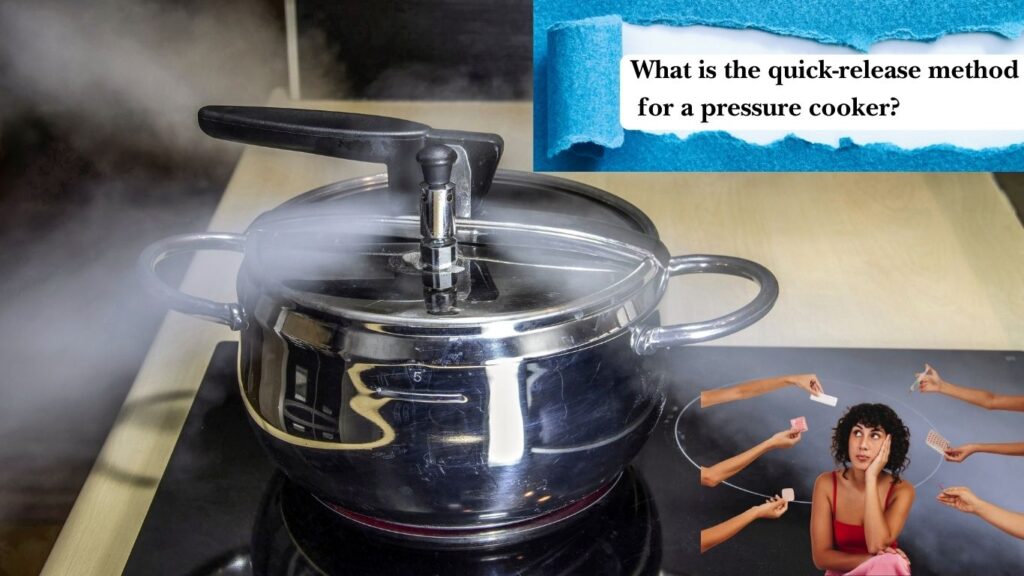We use affiliate links. If you purchase something using one of these links, we may receive compensation or commission.

Understanding the Quick Release Method on a Pressure Cooker
Pressure cookers are a staple in kitchens around the world, known for their ability to cook meals faster than traditional methods. Among their features, the quick-release method stands out as a critical technique for modern cooks. This article delves into what the quick-release method is, how it works, and why it’s beneficial for your culinary adventures.
What is the quick-release method for a pressure cooker?
What is the Quick Release Method?
The quick-release method is a function available on most modern pressure cookers that allows the steam built up inside the unit to be released rapidly. This method is beneficial when cooking ingredients that are sensitive to prolonged heat exposure, such as vegetables and seafood, preventing them from overcooking.
How Does the Quick Release Method Work?
Using the quick-release method involves turning a valve on the pressure cooker to the release position immediately after the cooking time has ended. This causes steam to exit the cooker forcefully through the valve, quickly lowering the pressure inside. The rapid change in pressure stops the cooking process almost immediately, which is crucial for dishes that require precise cooking times.
Advantages of Using the Quick Release Method
The quick-release method offers several benefits, including:
- Time Efficiency: It allows for quicker access to cooked dishes by reducing the waiting time for pressure to drop.
- Control Over Cooking: It gives cooks better control over the texture and doneness of delicate foods.
- Safety: It prevents the risk of overcooking and can also be a safer way to release pressure compared to the natural release method, as it avoids prolonged exposure to high pressure.
The Science Behind Quick Release
Understanding the scientific principles behind the quick-release method can help you use it more effectively:
- Pressure and Heat: Pressure cookers work by trapping steam inside a sealed pot, that raises the inside pressure and allows the temperature to rise above boiling water.
- Rapid Depressurization: By quickly releasing this steam, the quick-release method causes a rapid drop in temperature and pressure, halting the cooking process immediately.
Comparison with Natural Release
While the quick-release method is ideal for many dishes, it’s important to contrast it with the natural-release method, where the cooker is left to cool down naturally until the pressure drops on its own. This method is better suited for significant cuts of meat or legumes, which benefit from continued cooking during the pressure drop.
When to Use Quick Release
Choosing when to use the quick-release method depends on the recipe and the desired outcome for your dish. It is most appropriate for:
- Vegetables: Prevents them from becoming mushy.
- Seafood: Ensures that it remains tender and does not overcook.
- Eggs: Helps maintain the desired texture of cooked eggs, whether boiled or poached.
Tips for Using Quick Release Safely
To use the quick-release method safely and effectively, consider the following tips:
- Read the Manual: Always consult your pressure cooker’s manual for specific instructions on how to use the quick-release feature.
- Keep Clear: Ensure that the steam vent is directed away from your body and not obstructed by any objects.
- Use Intermittently: For very high-pressure levels, release the steam in short bursts to avoid spluttering of liquid.
Recipes that Benefit from Quick Release
Here are a few recipes where the quick-release method can make a significant difference:
- Steamed vegetables: Quick release preserves the crisp texture and vibrant color.
- Shrimp boil: Rapid depressurization keeps the shrimp tender.
- Quick soups: It prevents the ingredients from disintegrating into the broth.
Conclusion
The quick-release method on a pressure cooker is an essential technique for modern cooking, offering speed, efficiency, and precision. By understanding when and how to use this method, you can make the quality of your dishes and enjoy safer, more convenient cooking. Whether you’re a novice or a seasoned chef, integrating the quick-release method into your cooking routine can revolutionize the way you prepare meals.


